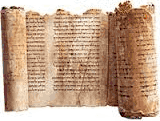Classics and Religious Studies, Department of

Sidnie White Crawford Publications
Date of this Version
2016
Document Type
Article
Citation
Published in The Dead Sea Scrolls at Qumran and the Concept of a Library. Eds. S. W. Crawford and C. Wassen; Leiden/Boston: Brill, 109-31.
Abstract
Since the early days of Dead Sea Scrolls scholarship, the collection of scrolls found in the eleven caves in the vicinity of Qumran has been identified as a library.1 That term, however, was undefined in relation to its ancient context. In the Greco-Roman world the word “library” calls to mind the great libraries of the Hellenistic world, such as those at Alexandria and Pergamum.2 However, a more useful comparison can be drawn with the libraries unearthed in the ancient Near East, primarily in Mesopotamia but also in Egypt.3 These libraries, whether attached to temples or royal palaces or privately owned, were shaped by the scribal elite of their societies. Ancient Near Eastern scribes were the literati in a largely illiterate society, and were responsible for collecting, preserving, and transmitting to future generations the cultural heritage of their peoples. In the Qumran corpus, I will argue, we see these same interests of collection, preservation, and transmission. Thus I will demonstrate that, on the basis of these comparisons, the Qumran collection is best described as a library with an archival component, shaped by the interests of the elite scholar scribes who were responsible for it.


Comments
© Koninklijke Brill NV, Leiden, 2016
DOI 10.1163/9789004305069_008